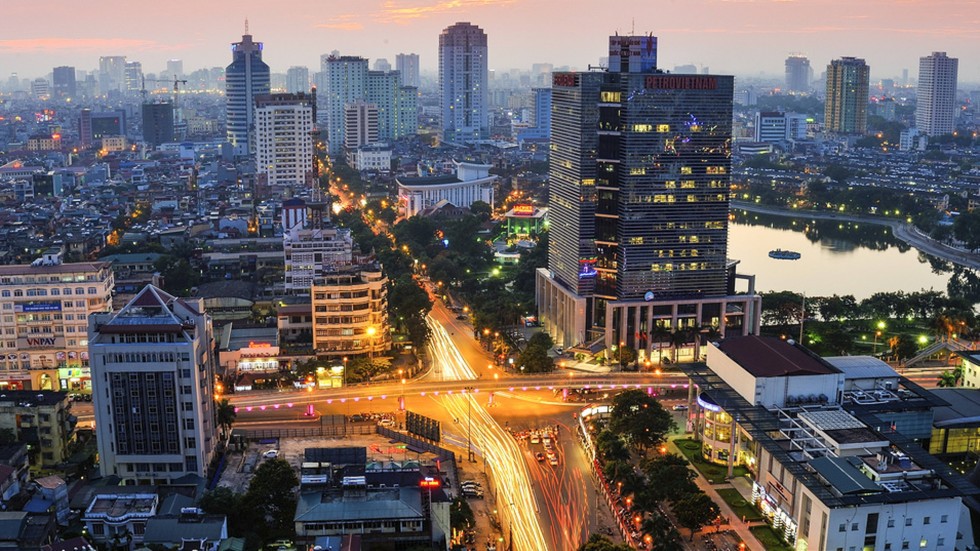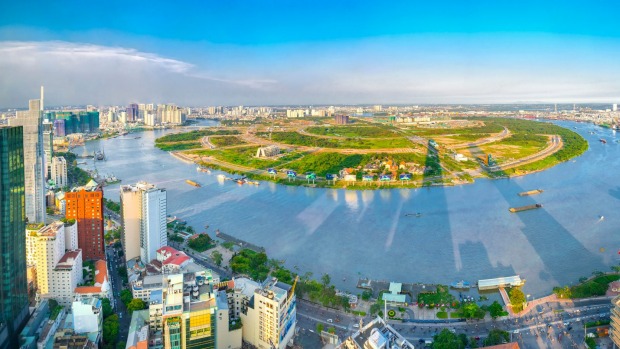Regulations on water protection in Vietnam

Vietnam Law on Environmental protection has regulations on water protection. Let’s find out this issue with Lawyer X through the following situation: “Dear Lawyer! I want to know what are regulations on surface water protection in Vietnam? What does surface water protection activities focus on? What are regulations on seawater protection? Thanks for answering my questions!”
Legal grounds
- Vietnam Law on Environmental protection
General regulations on surface water protection
– Quality of surface water, sediments and aquatic environment must be monitored and evaluated; surface water carrying capacity must be calculated, determined and announced.
– Sources of waste discharged into surface water must be managed in a manner that is appropriate to intended use and carrying capacity of surface water. Result of appraisal of the environmental impact assessment report shall not be approved for or environmental license shall not be issued to the new investment project that discharges wastewater directly into the surface water that has reached its carrying capacity as announced by a competent authority, except for the case in which the investment project owner has adopted a scheme to treat wastewater in accordance with technical regulation on environment regarding quality of surface water before discharging it into a water body or has adopted a circulation or recycling scheme in order not to generate more wastewater or the case where the project aims to deal with pollution and improve quality of the environment in a pollution area.
– River water shall be protected by applying the principles of integrated river basin management and associated with biodiversity conservation, aquatic environment protection, management of water source protection corridors, and reasonable extraction and use of water.

Surface water protection activities
– Surface water protection shall focus on:
+ Statistically reporting, assessing, minimizing and treating wastewater discharged into surface water;
+ Monitoring and assessing quality of surface water, sediment and aquatic environment and publishing information in service of management, extraction and use of water surface;
+ Investigating and assessing carrying capacity of surface water; announcing areas where the surface water has reached its carrying capacity; assessing quotas for discharge of wastewater into the surface water;
+ Eliminating pollution, remediating and improving polluted surface water;
+ Monitoring and assessing quality of surface water and sediments of international rivers and sharing information in accordance with regulations of law on environmental protection, law and international practice.
– The Ministry of Natural Resources and Environment has the responsibility to:
+ provide guidance on assessing surface water carrying capacity of rivers and lakes; provide guidance on assessing surface water quality;
+ organize assessment of surface water and sediment quality, surface water carrying capacity of inter-provincial rivers and lakes; organize inventorying and assessment of waste sources and pollution level, and organize elimination of inter-provincial river and lake pollution; formulate and submit to the Government a surface water quality management plan for inter-provincial rivers and lakes that play a key role in socio-economic development and environmental protection;
+ inspect the implementation of the surface water quality management plan for inter-provincial rivers and lakes and measures to prevent and mitigate water pollution and improve water quality in inter-provincial rivers and lakes.
– People’s Committees have the responsibility to:
+ determine provincial rivers and lakes and other surface water sources in areas that play important role in socio-economic development and environmental protection; determine domestic water safeguard zones and water source protection corridors within provinces; determine aquatic areas;
+ publish information about sources of waste discharged into the surface water within provinces; collect information and data on state of surface water, waste sources and total amount of waste discharged into surface water in inter-provincial rivers and lakes within provinces under the guidance of the Ministry of Natural Resources and Environment; direct organizations to assess damage caused by pollution and remediate surface water pollution within provinces as prescribed;
+ prevent and control sources of waste discharged into surface water sources within provinces; take measures to prevent and minimize surface water pollution, improve surface water quality within provinces according to the surface water quality management plan;
+ organize assessment of surface water and sediment quality, carrying capacity and quotas for discharge of wastewater with respect to the surface water sources mentioned in Point a of this Clause; publish information about areas where surface water has reached its carrying capacity;
+ promulgate and organize the implementation of the plan for management of quality of surface water mentioned in Point a of this Clause; organize implementation of the surface water quality management plan for inter-provincial rivers and lakes within provinces.
Surface water quality management plan
– The surface water quality management plan for inter-provincial rivers and lakes must be conformable with the national environmental protection planning.
The surface water quality management plan for the water sources mentioned in Point a Clause 3 Article 8 of this Law must be conformable with the national environmental protection planning and environmental protection contents specified in the regional and provincial planning.
– Contents of the surface water quality management plan include:
+ Assessing and predicting trends in changes in surface water quality; objectives and targets of the plan; determining domestic water safeguard zones and water source protection corridors; determining aquatic areas;
+ Current distribution of point source pollution, and non-point source pollution with pollutants released into the water in the affected area; risk of transboundary surface water pollution;
+ Types and total amount of pollutants discharged into the surface water;
+ Assessing carrying capacity, zoning and quotas for wastewater discharge; determining objectives and roadmap for reducing wastewater discharge into the surface water that has reached its carrying capacity;
+ Measures to prevent and reduce surface water pollution; solutions for cooperation in, sharing of information and management of transboundary surface water pollution;
+ Solutions for protecting and improving surface water quality;
+ Organizing implementation.
– The surface water quality management plan is formulated for 5-year periods.
– The Government shall elaborate contents of, sequence and procedures for promulgating a surface water quality management plan.
Regulations on Groundwater protection
– Sources of groundwater must be monitored and assessed so that measures are taken promptly if any environmental parameter is found exceeding the permissible level prescribed in a national technical regulation on environment or there is a reduction in the water level.
– Groundwater protection measures must be taken upon carrying out groundwater exploration and extraction.
– Establishments using toxic chemicals and radioactive substances must take measures to prevent leakage and release of toxic chemicals and radioactive substances into groundwater.
– Establishments, warehouses and yards containing materials, raw materials and chemicals and areas for containing and treating waste must be constructed in such a manner that ensures technical safety and does not cause groundwater pollution.
– Agencies, organizations, residential communities, households and individuals causing groundwater pollution shall remediate pollution.
– The groundwater protection shall comply with regulations of this Law, law on water resources and other relevant regulations of law.
– The Minister of Natural Resources and Environment shall elaborate groundwater protection.
– People’s Committees of provinces shall protect groundwater within provinces as prescribed by law.
Regulations on seawater protection
– Sources of waste discharged into seawater must be investigated and assessed and subject to any measure to be taken to prevent, minimize, control and treat them to satisfy the environmental protection requirements.
– Areas at risk of sea and island environment pollution must be assessed, identified and announced in accordance with regulations of law on natural resources and environment of sea and islands.
– The extraction of resources from sea and islands and other socio-economic activities shall comply with the planning, and environmental protection and sustainable development requirements.
– Upon seawater protection, it is required to ensure close and effective cooperation between relevant organizations and individuals; between Vietnam’s regulatory bodies and foreign bodies in sharing information, assessing seawater quality and controlling cross-border seawater pollution.
– The seawater protection shall comply with regulations of this Law, law on natural resources and environment of sea and islands and other relevant regulations of law.
Please see more:
- Instructions for exclusive registration of company logos in Vietnam
- Service of changing the legal representative of Vietnamese enterprises
Services of Lawyer X
Prestigious professional services: Firstly, the team of consultants and consultants for many years in the field of civil status, and customer support.
On-time: Certainly, with the motto “Get your lawyer right at your fingertips”, we ensure the service always performs on time. The rights and interests of customers always come first.
Cost: Besides, Lawyer X’s service costs are highly competitive; depending on the nature of the particular case. So, we want our guests to have the best possible service experience. Therefore, costs which guaranteed to be the most suitable and economical for customers.
Confidentiality of client information: Finally, all personal information of clients Lawyer X will be 100% confidential.
If you need any further information, please contact LSX Law firm: at +84846175333 or Email: [email protected]
Frequently asked questions
Quality of surface water, sediments and aquatic environment must be monitored and evaluated; surface water carrying capacity must be calculated, determined and announced.
Sources of waste discharged into surface water must be managed in a manner that is appropriate to intended use and carrying capacity of surface water.
River water shall be protected by applying the principles of integrated river basin management and associated with biodiversity conservation, aquatic environment protection, management of water source protection corridors, and reasonable extraction and use of water.
Conclusion: So the above is Regulations on water protection in Vietnam. Hopefully with this article can help you in life, please always follow and read our good articles on the website: lsxlawfirm.com




